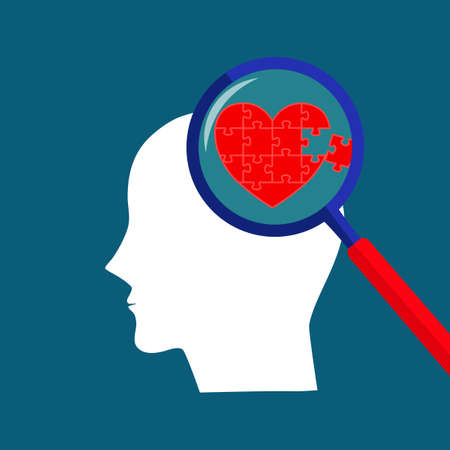Understanding Emotional Intelligence (EQ)
In today’s fast-paced and diverse American society, emotional intelligence—or EQ—has become a buzzword in both personal growth circles and professional settings. But what does emotional intelligence really mean? At its core, EQ is the ability to recognize, understand, and manage our own emotions while also being sensitive to the feelings of others. It goes far beyond simply being “nice” or “sensitive.” True emotional intelligence empowers us to navigate life’s challenges with resilience, adapt to change, and build authentic connections with those around us.
Why does EQ matter so much in the American landscape? From boardrooms to classrooms, our ability to read the room, empathize with different perspectives, and respond thoughtfully shapes not only our relationships but also our opportunities for success. In a culture that values individuality yet thrives on collaboration, EQ helps bridge differences and fosters trust. Whether you’re negotiating a deal, leading a team, or supporting a friend through tough times, your emotional awareness often sets the stage for positive outcomes.
Ultimately, developing emotional intelligence is foundational for making good decisions in all areas of life. It strengthens self-awareness, sharpens judgment, and enhances our capacity to act with intention rather than impulse. As we dive deeper into the connection between feelings and decision-making, remember: mastering EQ isn’t just a soft skill—it’s a game changer for anyone seeking lasting fulfillment and impact in America’s ever-evolving landscape.
2. The Science Behind Emotions and Decisions
If you’ve ever made a snap decision or spent days agonizing over a choice, you’ve felt firsthand how emotions play into our decision-making process. But what’s really happening inside our brains? Let’s break it down. Psychology and neuroscience reveal that emotions aren’t just background noise—they’re central to every decision we make, whether we realize it or not.
How Emotions Influence Our Choices
Our brains process emotions and logic in tandem, but sometimes feelings take the lead—especially when time is short or stakes are high. The amygdala, often called the brain’s “emotional center,” reacts instantly to threats and opportunities, pushing us toward quick choices. Meanwhile, the prefrontal cortex helps us weigh consequences and plan for the future. When these systems work together, we’re more likely to make thoughtful decisions; when they clash, impulsive or regretful choices can happen.
Split-Second vs. Long-Term Decisions
| Type of Decision | Emotional Influence | Brain Area Involved |
|---|---|---|
| Instant Reactions (e.g., slamming on brakes) | High—emotions dominate for safety and survival | Amygdala |
| Short-Term Choices (e.g., picking lunch) | Moderate—feelings guide preferences but logic plays a part | Amygdala + Prefrontal Cortex |
| Long-Term Plans (e.g., career moves) | Balanced—emotions provide motivation; logic weighs outcomes | Prefrontal Cortex |
The Takeaway: Feelings Aren’t Flaws—they’re Tools
Understanding the science behind emotions and decisions reminds us that feelings aren’t weaknesses to overcome. Instead, they’re powerful signals guiding us through both everyday moments and major milestones. When we learn to notice and manage these emotional cues, we set ourselves up for better, more confident choices—every single time.

3. How EQ Influences Everyday Choices
Emotional intelligence isn’t just a buzzword—it’s a practical superpower that quietly shapes the choices we make every day. Let’s dive into how being emotionally aware can help us navigate real-life scenarios, from our careers to our personal lives and financial decisions.
Work: Navigating Challenges with Emotional Awareness
Imagine you’re at work and faced with a stressful deadline or a difficult coworker. Someone with high EQ can recognize their own stress signals, pause before reacting, and communicate calmly. Instead of lashing out or shutting down, they might ask for support or suggest a compromise. This emotional self-awareness doesn’t just defuse tension—it also builds trust and teamwork, leading to smarter solutions and stronger workplace relationships.
Relationships: Responding, Not Reacting
In personal relationships, emotions run deep. Whether it’s family drama or a disagreement with your partner, EQ helps you notice your feelings without letting them take over. For example, if your friend cancels plans last minute, instead of immediately feeling hurt or angry, emotional intelligence lets you pause and consider their perspective. You respond thoughtfully rather than react impulsively—preserving the relationship and growing mutual understanding.
Money: Making Clear-Headed Financial Decisions
Financial choices are often loaded with emotion—fear, excitement, even guilt. High EQ means being honest about these feelings before making big decisions like investing or budgeting. Maybe you’re tempted to splurge on something because you’ve had a rough week. With emotional awareness, you recognize this urge for what it is—a temporary feeling—not a reason to derail your financial goals. This mindful approach leads to more resilient money habits in the long run.
The Power of Pause
No matter the situation, EQ gives us the power to pause, reflect, and choose actions that align with our values rather than just our moods. By tuning into our emotions—without letting them take the wheel—we build resilience and make better decisions that stand the test of time.
4. Practical Tools for Boosting EQ
When you’re standing at a crossroads or facing a tough decision, your emotions can either cloud your judgment or serve as powerful guides. Developing emotional intelligence (EQ) isn’t just about understanding feelings—it’s about using them wisely to make better choices. Here are some actionable strategies and mindsets you can start using right away to recognize, manage, and harness your emotions when the pressure is on.
Pause Before You Decide
One of the simplest yet most effective tools is the power of the pause. When emotions run high, take a moment to breathe and check in with yourself. Ask: “What am I feeling right now? Is this emotion helpful, or is it getting in my way?” This self-check helps create space between stimulus and response, giving you time to choose a thoughtful reaction instead of an impulsive one.
Name Your Emotions
Putting words to what you feel—whether it’s frustration, excitement, anxiety, or hope—can help you gain clarity. Research shows that labeling emotions reduces their intensity and gives you more control over your responses. Try using a simple chart like the one below to identify what’s really going on inside:
| Emotion | Physical Clues | Possible Triggers |
|---|---|---|
| Anxiety | Racing heart, tense muscles | Uncertainty about outcomes |
| Frustration | Tight jaw, clenched fists | Obstacles or delays |
| Excitement | Butterflies in stomach, increased energy | New opportunities or challenges |
| Hopefulness | Relaxed posture, smiling | Positive possibilities ahead |
Reframe Your Perspective
How you interpret your emotions matters. Instead of seeing anxiety as a sign you shouldn’t act, reframe it as energy that prepares you for what’s next. If frustration arises, see it as a signal to get creative with problem-solving rather than a cue to give up.
Cultivate a Growth Mindset Toward Feelings
Acknowledge that every emotion has value—even the uncomfortable ones. Treat them as information rather than obstacles. The mindset here is: “My feelings are telling me something important about myself or my situation.” Use this insight to inform your decisions.
Practice Empathy—With Yourself and Others
Tough calls aren’t just about logic; they’re also about people. Put yourself in others’ shoes before making choices that affect them. Equally important: offer yourself compassion if things don’t go perfectly. Self-empathy builds resilience for future decisions.
Your EQ Toolkit in Action
The next time you face a big choice, remember these steps: pause and breathe, name your feelings, look for the message behind each emotion, reframe negativity as opportunity, and approach both yourself and others with empathy. With practice, these habits will help you stay grounded and make good choices—even when emotions run strong.
5. Learning From Mistakes: EQ in Action
In the journey of personal growth, setbacks and mistakes are not just inevitable—they’re essential. For many Americans, these moments become turning points where emotional intelligence (EQ) truly shines. Take, for example, the story of Howard Schultz, former CEO of Starbucks. Early in his career, Schultz faced a failed business venture that left him questioning his instincts and leadership. Instead of letting disappointment define him, he leaned into his feelings—frustration, embarrassment, and even fear—and asked himself tough questions about what went wrong. Through this self-reflection, Schultz developed greater empathy for both customers and employees, which later influenced Starbucks’ famously people-first culture.
Another everyday example comes from teachers across America who face challenging classrooms or difficult student interactions. Many educators admit to moments of losing their cool or making snap judgments. What sets them apart is their willingness to pause, acknowledge their emotions, and apologize when necessary. By modeling self-awareness and openness to students, they not only repair relationships but also inspire resilience and trust within their communities.
What these stories have in common is a core principle of emotional intelligence: mistakes aren’t just setbacks; they’re feedback. Each misstep invites us to check in with ourselves—what were we feeling? Why did we react that way? How can we choose better next time? Self-awareness often follows these moments of regret or discomfort. It’s through facing our emotional responses honestly that we learn how to make wiser choices moving forward.
Across American workplaces, families, and friendships, the pattern repeats: those who use mistakes as learning opportunities grow stronger, kinder, and more effective decision-makers. Their stories remind us that embracing our imperfections with courage and curiosity is not only possible—it’s the American way to turn adversity into advantage through EQ in action.
6. Building a Culture of Emotionally Intelligent Choices
Creating a culture where emotional intelligence (EI) guides decision-making isn’t just a personal goal—it’s something that can transform entire workplaces, schools, and communities across the United States. When we actively encourage EI, we’re not just helping individuals make better choices; we’re building environments where trust, understanding, and collaboration become the norm.
Workplaces: Fostering Empathy and Growth
American companies thrive on innovation and teamwork, but these flourish only when employees feel heard and understood. By promoting EI in the workplace—through leadership training, open feedback channels, and peer-support programs—organizations create teams that communicate honestly, handle conflicts with empathy, and adapt to change with resilience. This leads not just to higher productivity, but also to happier employees who are more invested in their work and each other.
Schools: Teaching Beyond Academics
U.S. schools are increasingly recognizing that academic success is deeply tied to emotional well-being. Programs that teach self-awareness, responsible decision-making, and emotional regulation empower students to face challenges with confidence. When educators model EI in classrooms—by listening without judgment and validating feelings—they shape future leaders who can think critically while respecting diverse perspectives. These skills don’t just help students now; they set the stage for lifelong success.
Communities: Leading With Heart
Strong communities are built on mutual respect and shared purpose. In neighborhoods across America, community leaders can promote EI by encouraging open dialogue about feelings and values—whether through town hall meetings, youth initiatives, or support groups. When people feel safe expressing themselves and know their emotions matter, they’re more likely to collaborate on solutions that benefit everyone. This sense of belonging is vital for tackling complex social issues together.
Why It Matters
The ripple effect of emotionally intelligent choices extends far beyond individual well-being. In today’s fast-paced world—where misunderstandings can escalate quickly—developing collective EI leads to smarter decisions at every level of society. It helps us bridge divides, solve problems creatively, and build lasting connections. By nurturing emotional intelligence in our everyday environments, we’re not just making better choices—we’re shaping a more compassionate and resilient America for generations to come.


